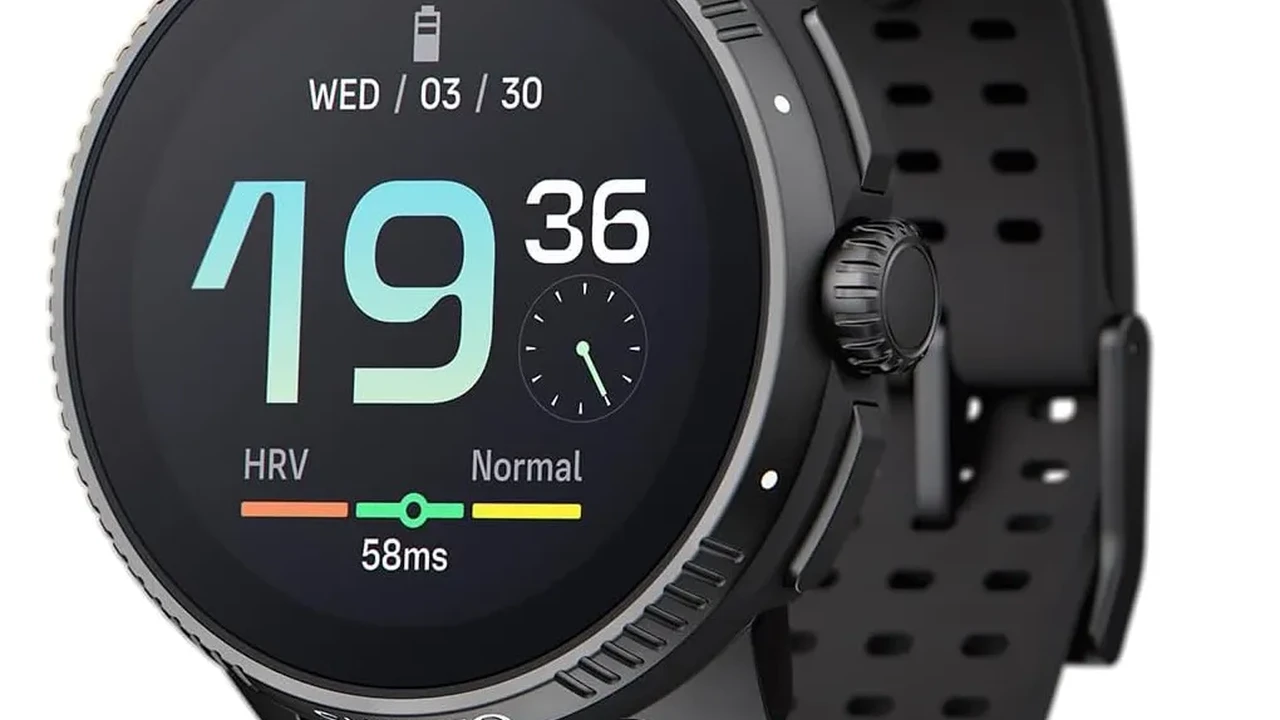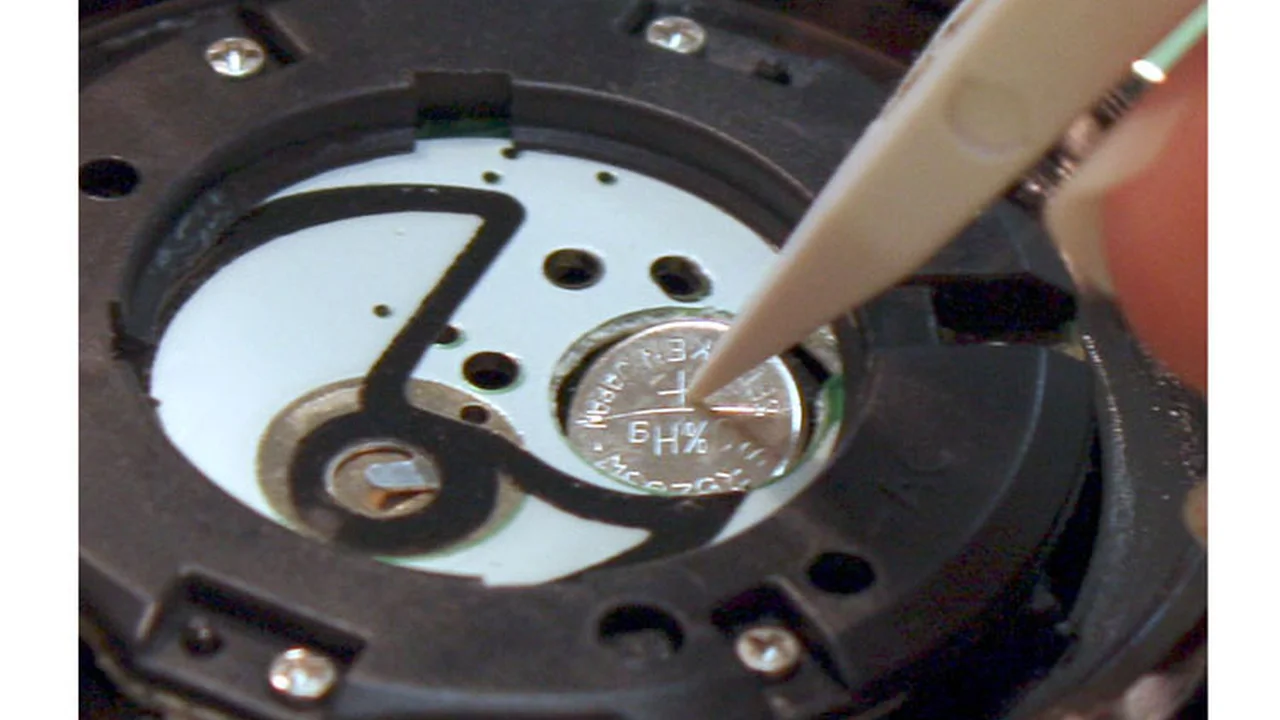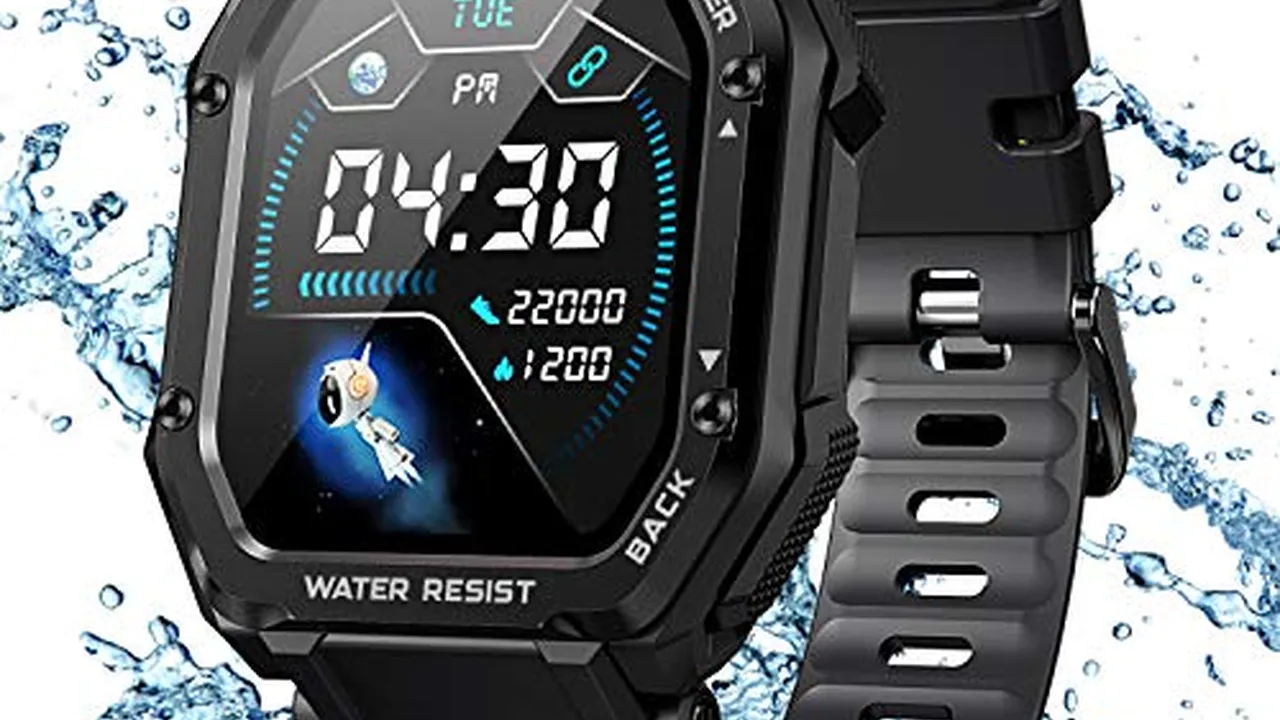Smartwatch Battery Technology Breakthroughs
Learn about the latest advancements in smartwatch battery technology, promising longer life and faster charging.

Smartwatch Battery Technology Breakthroughs
Hey there, tech enthusiasts! Ever found yourself frustrated with your smartwatch dying on you mid-day? You're not alone. Battery life has always been a major pain point for wearable tech. But guess what? Things are changing, and fast! We're seeing some incredible breakthroughs in smartwatch battery technology that are promising longer life, faster charging, and even new ways to power our beloved wrist companions. Let's dive into what's happening in the world of smartwatch power.
The Quest for Longer Smartwatch Battery Life
For years, the dream has been a smartwatch that lasts for weeks, not just days or hours. While we're not quite there yet for every device, significant strides are being made. The focus isn't just on bigger batteries, but smarter energy management and more efficient components.
Improved Battery Chemistry and Density
One of the most direct ways to get more juice is to pack more energy into the same space. Lithium-ion batteries, the workhorses of modern electronics, are constantly being refined. Researchers are exploring new cathode and anode materials, like silicon-based anodes, which can theoretically hold much more lithium than traditional graphite. This means higher energy density, allowing manufacturers to squeeze more power into the tiny confines of a smartwatch. We're talking about incremental gains, but over time, these add up significantly.
More Efficient Processors and Displays
It's not just the battery itself; it's also how efficiently the smartwatch uses that power. Chipmakers like Qualcomm, Apple, and Samsung are designing processors specifically for wearables that consume less power while still delivering snappy performance. Think about the shift from older, power-hungry chips to the latest generation of Wear OS or Apple's S-series chips – they're designed from the ground up for efficiency. Similarly, display technology plays a huge role. AMOLED screens, while vibrant, can be power hogs. However, advancements in low-power display modes, always-on displays with minimal refresh rates, and even the integration of secondary, ultra-low-power displays (like on the TicWatch Pro series) are helping to conserve battery life without sacrificing usability.
Software Optimization and Power Management
This is often the unsung hero of battery life. Smartwatch operating systems are becoming incredibly sophisticated at managing power. Features like adaptive brightness, intelligent background app refreshing, and even machine learning algorithms that learn your usage patterns to optimize power consumption are becoming standard. For example, your smartwatch might learn that you rarely check notifications between 2 AM and 6 AM and will automatically reduce its activity during those hours. This kind of smart management can add hours, if not days, to your battery life.
Faster Smartwatch Charging Technologies
Even with longer battery life, nobody wants to wait hours for their smartwatch to charge. Fast charging, once a smartphone exclusive, is now making its way to wearables, and it's a game-changer.
Increased Charging Speeds and Wireless Charging Advancements
Traditional smartwatch charging was often slow and cumbersome. Now, many smartwatches support faster charging speeds, often achieving a significant percentage of charge in just 30 minutes. This is usually done through higher wattage chargers and optimized charging circuits within the watch itself. Wireless charging, while not new, is also becoming more efficient and widespread. Qi wireless charging is common, and some brands are even developing proprietary wireless charging solutions that are faster and more reliable. Imagine throwing your watch on a pad for a quick shower and getting enough juice for the rest of the day!
Magnetic Charging and Convenient Solutions
While not a 'breakthrough' in speed, the widespread adoption of magnetic charging docks has significantly improved the user experience. No more fumbling with tiny ports; just snap it on, and it charges. This convenience encourages more frequent, shorter charging sessions, which can effectively extend the perceived battery life for users.
Emerging Smartwatch Power Technologies
Beyond just improving existing battery tech, researchers are looking at entirely new ways to power smartwatches, moving towards a future where charging might become a rare event.
Kinetic and Solar Charging for Smartwatches
Remember those old kinetic watches that charged themselves with your movement? The concept is being revisited for smartwatches. While not powerful enough to run a full-featured smartwatch on its own, kinetic energy harvesting could potentially trickle-charge the battery, extending its life. Similarly, solar charging, already seen in some Garmin Fenix models, is becoming more efficient. Tiny solar panels integrated into the display can continuously top up the battery, especially useful for outdoor enthusiasts. Imagine your watch gaining charge just by being exposed to sunlight throughout the day!
Thermoelectric and Body Heat Harvesting
This is where things get really futuristic! Thermoelectric generators can convert temperature differences into electrical energy. Since your body is warmer than the ambient air, a smartwatch could potentially harvest a small amount of energy from your wrist heat. While current technology yields very little power, ongoing research aims to make this a viable supplementary power source, potentially allowing for truly 'always-on' devices without needing a charger.
Fuel Cells and Micro-Batteries
Further down the line, we might see micro fuel cells or even solid-state batteries. Fuel cells could offer incredibly high energy densities, potentially powering a smartwatch for weeks or months on a single 'charge' of a tiny fuel cartridge. Solid-state batteries, still largely in the research phase, promise greater safety, faster charging, and even higher energy densities than current lithium-ion tech. These are exciting prospects for the long-term future of wearables.
Real-World Examples and Product Recommendations
Let's look at some smartwatches that are leading the charge (pun intended!) in battery life and charging innovation.
Garmin Fenix 7 Series Solar Charging Champion
The Garmin Fenix 7 series, especially the Solar and Solar Sapphire editions, are prime examples of extended battery life. These watches integrate Power Glass or Power Sapphire solar charging lenses that convert sunlight into battery power. For instance, the Fenix 7X Solar can offer up to 28 days in smartwatch mode, and with sufficient solar exposure, it can extend that to 37 days. In GPS mode, it's up to 89 hours, extendable to 122 hours with solar. This makes it ideal for hikers, ultra-runners, and anyone who spends a lot of time outdoors. The price range for the Fenix 7 series typically starts around $699 and goes up to $999+ depending on the model and features.
Apple Watch Ultra Long-Lasting Performance
While not reaching Garmin's multi-week battery life, the Apple Watch Ultra significantly improves upon the standard Apple Watch. It boasts up to 36 hours of normal use and up to 60 hours in low-power mode. This is a huge leap for Apple users who previously had to charge daily. The larger battery, combined with the efficient S8 SiP (System in Package) and optimized watchOS, makes it a reliable companion for multi-day adventures or just getting through a busy week without constant charging anxiety. It also features fast charging, getting you to 80% in about an hour. The Apple Watch Ultra is priced at $799.
Samsung Galaxy Watch 5 Pro Endurance King
Samsung's Galaxy Watch 5 Pro is another strong contender for battery life, especially for Android users. With its massive 590mAh battery, it promises up to 80 hours of typical use, which translates to several days on a single charge. This is a significant improvement over previous Galaxy Watch models. It also supports fast charging, allowing you to get a substantial charge in a short amount of time. This watch is perfect for Android users who want a premium smartwatch experience with excellent battery endurance for daily use, workouts, and even light multi-day trips. The Galaxy Watch 5 Pro typically retails for around $449.
TicWatch Pro 5 Dual-Layer Display Advantage
The TicWatch Pro 5 stands out with its unique dual-layer display technology. It combines a vibrant OLED display with an ultra-low-power FSTN (Film Compensated Super Twisted Nematic) LCD display. The FSTN display shows essential information like time, steps, and heart rate with minimal power consumption, allowing the OLED to be turned off when not needed. This innovative approach, combined with the efficient Snapdragon W5+ Gen 1 Wearable Platform, gives the TicWatch Pro 5 an impressive battery life of up to 80 hours in Smart Mode. It also supports fast charging. This makes it a great option for Wear OS fans who prioritize battery life without sacrificing smart features. The TicWatch Pro 5 is usually priced around $349.
Amazfit GTR 4 and GTS 4 Extended Battery Life
Amazfit has consistently delivered smartwatches with excellent battery life, and the GTR 4 and GTS 4 are no exception. The GTR 4, with its larger battery, can last up to 14 days with typical usage, while the GTS 4 offers up to 8 days. These watches run on Amazfit's Zepp OS, which is highly optimized for power efficiency. They offer a comprehensive suite of fitness and health tracking features, making them great value for money for users who want long battery life without breaking the bank. The Amazfit GTR 4 and GTS 4 are typically priced around $199-$229.
What's Next for Smartwatch Batteries
The future of smartwatch battery technology is incredibly exciting. We're likely to see a continued push towards higher energy densities in lithium-ion batteries, alongside more sophisticated power management software. The integration of supplementary charging methods like solar and kinetic energy harvesting will become more common, potentially leading to smartwatches that rarely, if ever, need to be plugged in. Imagine a smartwatch that charges itself as you walk, or simply by being exposed to light throughout the day. This would truly revolutionize the user experience, making smartwatches even more seamless and integrated into our daily lives. The goal is to make battery life a non-issue, allowing us to focus on the amazing features and health insights these tiny computers on our wrists can provide.
:max_bytes(150000):strip_icc()/277019-baked-pork-chops-with-cream-of-mushroom-soup-DDMFS-beauty-4x3-BG-7505-5762b731cf30447d9cbbbbbf387beafa.jpg)






